How to Choose Plants for Your Climate Zone: A Beginner's Guide
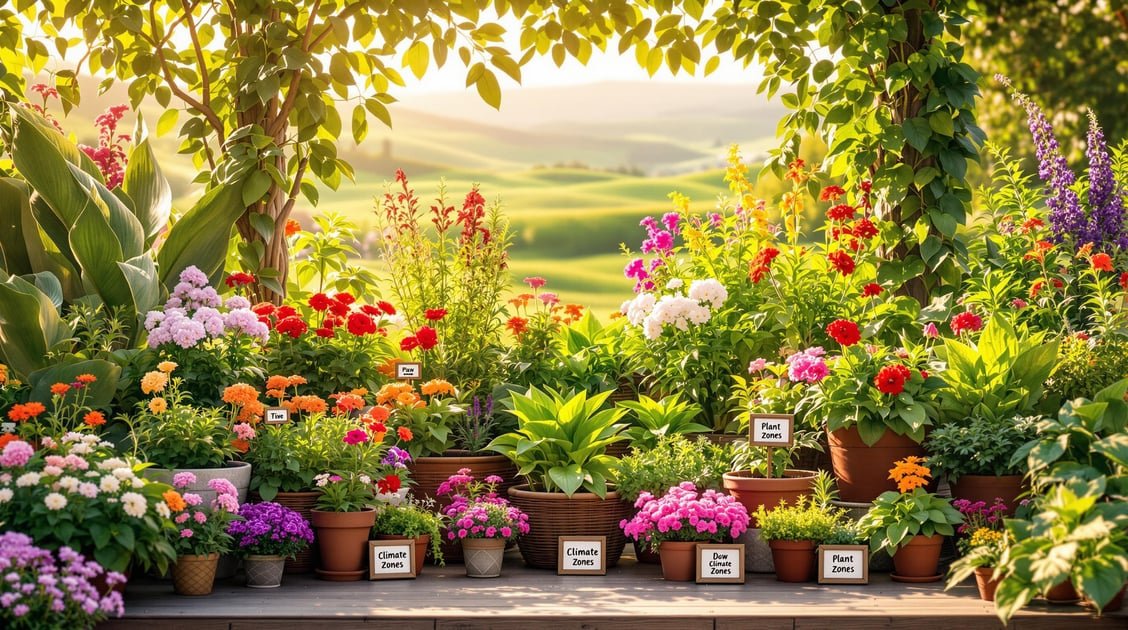
Want a thriving garden? Start by knowing your climate zone. Picking the right plants for your area saves time, money, and effort while ensuring your garden flourishes. Here’s how to get started:
- Find Your Zone: Use the USDA Plant Hardiness Zone Map to identify your zone based on average winter lows.
- Understand Local Factors: Consider rainfall, frost dates, humidity, and sunlight in your yard. Urban heat, water bodies, and elevation can also affect conditions.
- Choose Zone-Friendly Plants: Native plants or those suited to your zone need less water, fewer pesticides, and minimal upkeep.
- Test Your Soil: Check pH, texture, and nutrient levels for better planting decisions.
- Use Tools Like AIGardenPlanner: AI tools can analyze your local conditions and recommend plants with tailored care guides.
What Climate Zones Mean for Gardening
Climate Zones Basics
Climate zones act as helpful guides for gardeners, showing which plants are most likely to grow well in specific regions. These zones are determined by temperature patterns - especially the lowest winter temperatures - and other factors that impact plant growth.
A climate zone defines a geographic area where particular conditions create a distinct growing environment. These conditions include:
- Temperature extremes (both winter lows and summer highs)
- Length of the growing season
- Rainfall amounts and patterns
- Humidity levels
Knowing your climate zone can help you avoid common gardening mistakes. When plants are suited to their zones, they tend to grow stronger roots and adapt better to local weather conditions. This knowledge is key to understanding and using USDA zone maps effectively.
USDA Hardiness Zone Map Guide
The USDA Plant Hardiness Zone Map divides North America into zones based on the average annual lowest winter temperatures. Each zone covers a 10°F range, with smaller half-zones indicating 5°F differences.
Here's a breakdown of the USDA zones:
| Zone | Temperature Range (°F) | Description |
|---|---|---|
| 1–4 | Below -20°F | Best for plants that tolerate extreme cold |
| 5–7 | -20°F to 10°F | Found in many northern states |
| 8–10 | 10°F to 40°F | Mild winters, common in warmer regions |
| 11–13 | Above 40°F | Ideal for tropical and subtropical plants |
Finding Your Climate Zone
Reading the USDA Zone Map
To figure out your climate zone, use the USDA Plant Hardiness Zone Map. This interactive tool lets you enter your ZIP code to find your zone. For example, entering Minneapolis, MN (ZIP 55401) shows it as Zone 4b, which helps you pick plants that can handle the winter there.
Local Climate Factors
Keep in mind that some local factors can affect your growing conditions:
- Urban heat islands: Cities can be 5–10°F warmer than nearby rural areas.
- Water bodies: Lakes and rivers can moderate extreme temperatures.
- Elevation: Higher altitudes (about 1,000 ft) can drop temperatures by roughly 3.5°F.
- Building proximity: South-facing walls can reflect heat and block wind.
- Slope direction: North-facing slopes get less sunlight and hold more moisture.
These details refine your understanding of your climate zone and help create a more accurate picture of your garden's conditions.
Using AIGardenPlanner for Zone Analysis
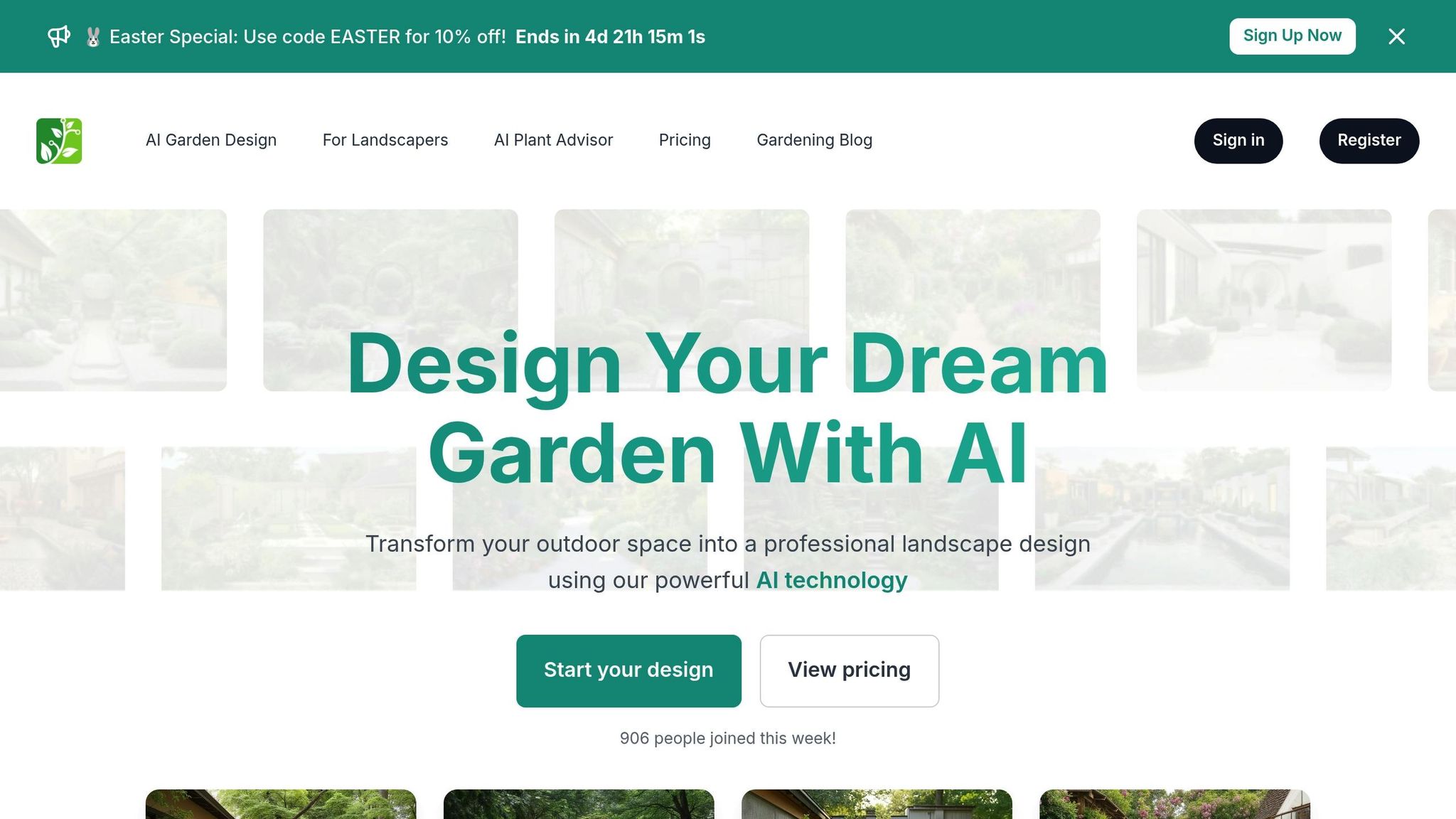
Once you’ve noted local factors, AIGardenPlanner takes it a step further by tailoring the analysis to your specific garden. This AI tool evaluates more than just the USDA zone data:
| Analysis Factor | What It Measures | Why It Matters |
|---|---|---|
| Microclimate Variables | Local temperature patterns | Highlights unique growing conditions |
| Seasonal Changes | Length of growing season | Helps you plan planting and harvesting times |
| Sun Exposure | Daily light patterns | Matches plants to available sunlight |
| Local Weather Data | Rainfall and humidity | Ensures plants get the moisture they need |
This tool connects general USDA data with your garden’s specific needs. It offers personalized growing guides and care schedules tailored to your location. Plant recommendations also include detailed care instructions, making it easier to achieve gardening success with precise, data-driven advice.
The NEW Hardiness Zone Map (Explained)

sbb-itb-4d6a8dd
🚀 Ready to Reinvent Your Garden?
Join thousands of homeowners who have transformed their gardens using our AI design tool. Upload one photo to explore endless possibilities.
Get your AI garden designs →Other Growing Conditions to Check
Once you know your climate zone, there are a few more factors to consider to ensure your garden thrives.
Rain and Air Moisture
Rainfall and humidity play a big role in how well your plants grow. Regions with heavy rain call for plants that can handle excess water and have good drainage. On the flip side, drier areas benefit from drought-tolerant plants. If you live in a humid area, look for varieties that resist fungal problems. In arid climates, plants like succulents that conserve moisture are a smart choice.
Soil Testing and Types
Testing your soil is crucial for understanding its composition and needs. Your local county extension office can provide a professional analysis. Aim to test your soil every 3-5 years in the fall, so you can make adjustments before spring planting.
Here are some key soil factors to keep an eye on:
| Soil Factor | Normal Range |
|---|---|
| pH Level | 6.2 - 7.2 |
| Clay Content | ~20% |
| Silt Content | ~40% |
| Sand Content | ~40% |
Once you've tested your soil, the next step is to think about how much sunlight your garden gets.
Light and Shade Patterns
Knowing how sunlight moves through your garden helps you place plants where they'll thrive. Observe the light throughout the day to determine:
- Full sun: 6 or more hours of direct sunlight
- Partial sun: 4-6 hours of direct sunlight
- Partial shade: 2-4 hours of sunlight
- Full shade: Less than 2 hours of direct sunlight
"Just because a plant tolerates shade doesn't mean it thrives in it - knowing the difference is key." - Rebecca Sweet, Harmony in the Garden
Picking Zone-Appropriate Plants
Once you've evaluated your climate and soil, it’s time to choose plants that naturally thrive in your area.
Start with Local Plants
Native plants are a great foundation for any garden. They’re already well-suited to the local environment, meaning they typically need less upkeep and water.
Here are some key benefits of going native:
| Benefit | Why It Matters |
|---|---|
| Disease Resistance | Built-in defenses against local pests and diseases |
| Water Efficiency | Matches regional rainfall levels |
| Seasonal Adaptation | Growth cycles align with local weather patterns |
| Wildlife Habitat | Attracts native pollinators and birds |
Plants for Different Zones
Now that you know your climate zone and growing conditions, consider these plant options based on your zone:
Cold Climate Zones (3-5)
- Perennials like Black-Eyed Susan and Purple Coneflower
- Hardy shrubs such as Winterberry and Arrowwood Viburnum
- Trees like Sugar Maple and White Spruce
Moderate Climate Zones (6-8)
- Perennials like Daylilies and Garden Phlox
- Flowering shrubs such as Hydrangeas and Rhododendrons
- Fruit trees including Cherry and Apple varieties
Warm Climate Zones (9-11)
- Heat-loving perennials like Lantana and Salvia
- Tropical plants such as Hibiscus and Bird of Paradise
- Citrus trees and Palm varieties
"The first and last frost dates are important in deciding when it is safe to plant outdoors, as well as when to take tender plants indoors." - Teri Speight, Master Gardener and Author
Check both USDA and American Horticultural Society Heat Zone maps to ensure your plants can handle the temperature swings in your area. If you have microclimates in your yard, you might even be able to grow plants from nearby zones with a little extra care.
Smart Plant Selection with AI
Advanced AI tools now make it easier than ever to choose plants that suit your garden's specific needs. By analyzing local conditions, these tools provide tailored recommendations to match your climate and gardening goals.
How AI Enhances Plant Selection
The AI Plant Advisor from AIGardenPlanner evaluates key factors to optimize your garden:
| Factor | How AI Helps |
|---|---|
| Location Data | Identifies your climate zone for better choices |
| Growing Conditions | Assesses soil type, sunlight, and moisture levels |
| Garden Goals | Aligns plant options with your gardening objectives |
| Maintenance Needs | Recommends plants that fit your care routine |
Features of the AI Plant Advisor
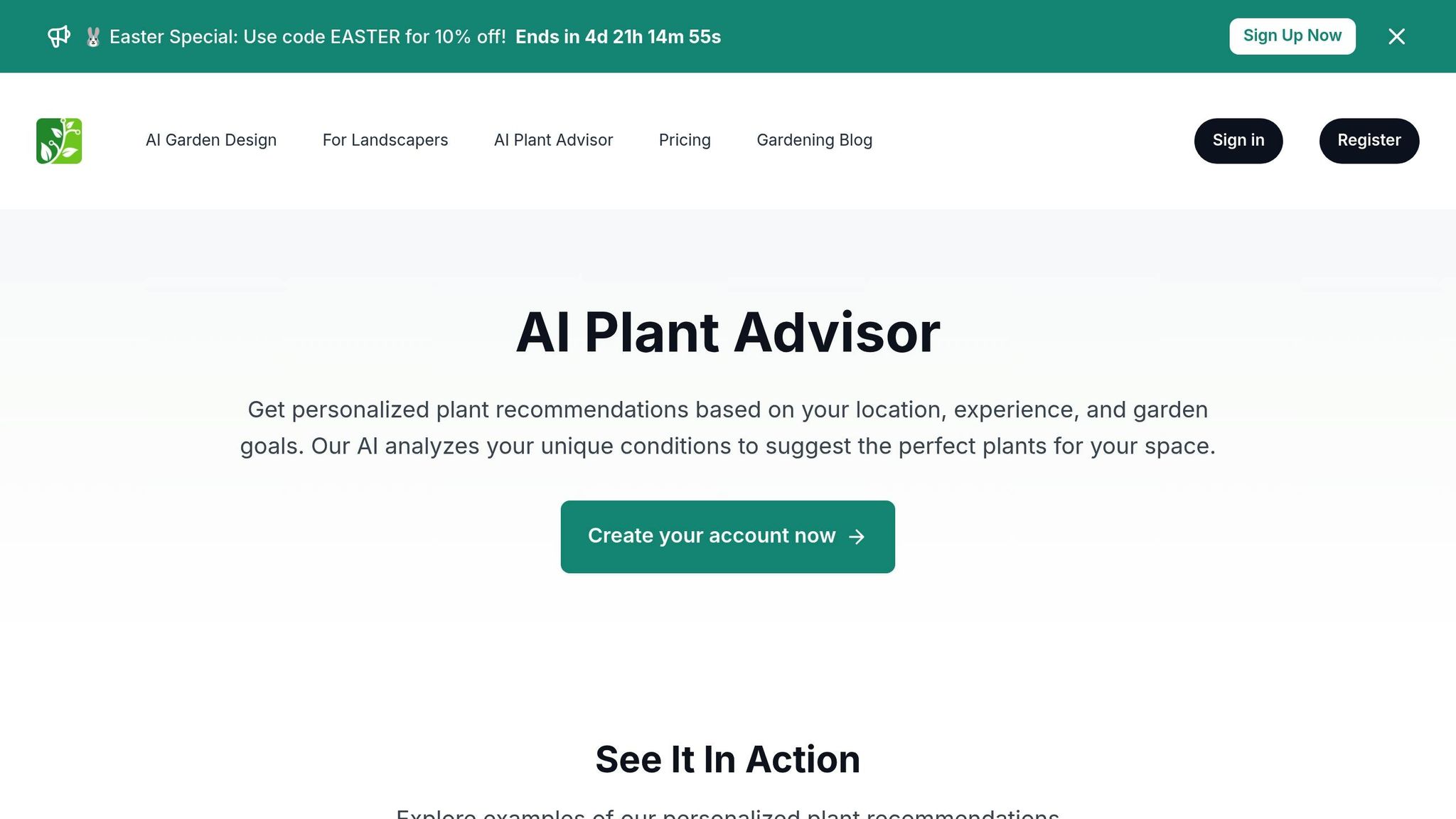
Using the AI Plant Advisor is simple and effective. It not only suggests plants but also provides detailed guides to help you care for them. Here’s what you can expect:
- Custom Garden Plans: Get plant recommendations tailored to your exact location.
- Care Instructions: Access specific schedules for watering, pruning, and more.
- Growing Guides: Learn the best planting and maintenance techniques.
- Climate-Specific Advice: Receive tips that align with your local weather patterns.
The system operates using 5 Generation Tokens per garden plan, making it an efficient tool for creating a thriving garden. By factoring in water availability and your maintenance capacity, this approach minimizes guesswork and sets your garden up for success.
Conclusion
Knowing your climate zone is key to successful gardening. As Teri Speight explains:
"The first and last frost dates are important in deciding when it is safe to plant outdoors, as well as when to take tender plants indoors".
Beyond general climate zones, smaller distinctions play a role. Each hardiness zone has "a" and "b" subzones, separated by a 5°F difference. These details, alongside USDA and Heat Zone data, help you pick plants that suit your area. The American Horticultural Society's Heat Zones also highlight regions where temperatures exceed 86°F (30°C).
With AIGardenPlanner's AI Plant Advisor, you can simplify plant selection. It evaluates local climate conditions and provides detailed growing guides and care schedules tailored to your zone, helping you make better choices for a thriving garden. Combining climate knowledge with AI tools sets your garden up for success year after year.
🎨 Visualize Your Dream Garden Today!
Transform any outdoor space into a professional landscape design in minutes. Just upload a photo, choose your style, and let our AI do the rest.
Start your garden transformation now →Related posts
Related Articles
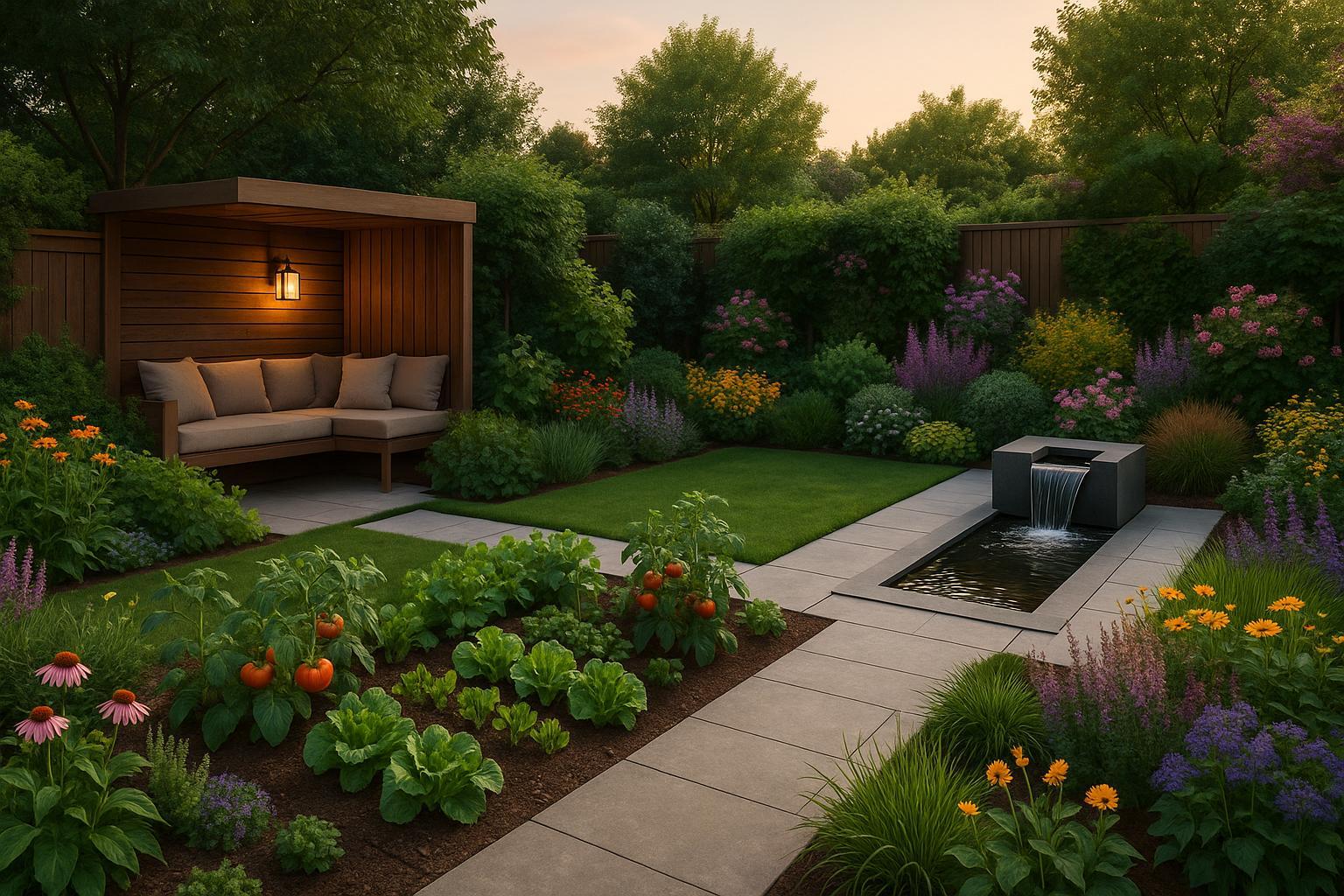
AI in Garden Design: Optimizing Multi-Use Spaces
Explore how AI simplifies the design of multi-use gardens, balancing aesthetics and functionality for diverse outdoor spaces.
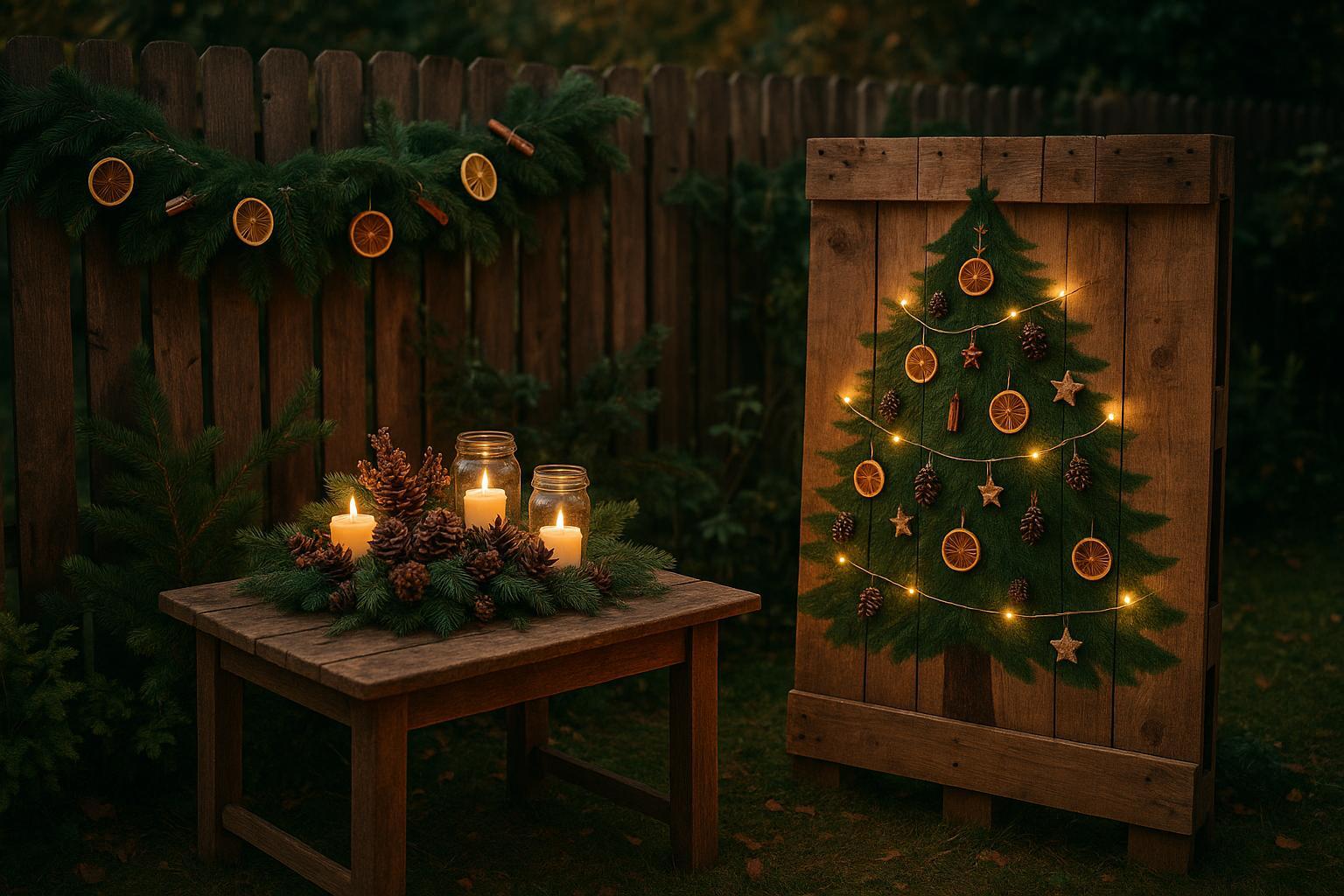
10 DIY Eco-Friendly Christmas Garden Decorations
Create beautiful, eco-friendly Christmas garden decorations using natural and recycled materials to celebrate sustainably this holiday season.
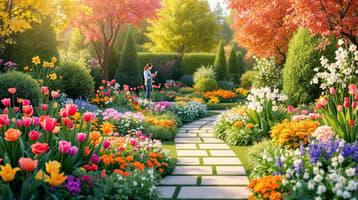
AI Tools for Designing Seasonal Garden Features
Explore how AI tools streamline seasonal garden design with personalized plans, plant suggestions, and visualizations for year-round beauty.

Effective Methods to Decrease Water Pressure in Garden Hose
Discover practical solutions for reducing high water pressure in your garden hose. Learn how to install a pressure regulator, use a flow restrictor, and adjust the main water valve for optimal performance.
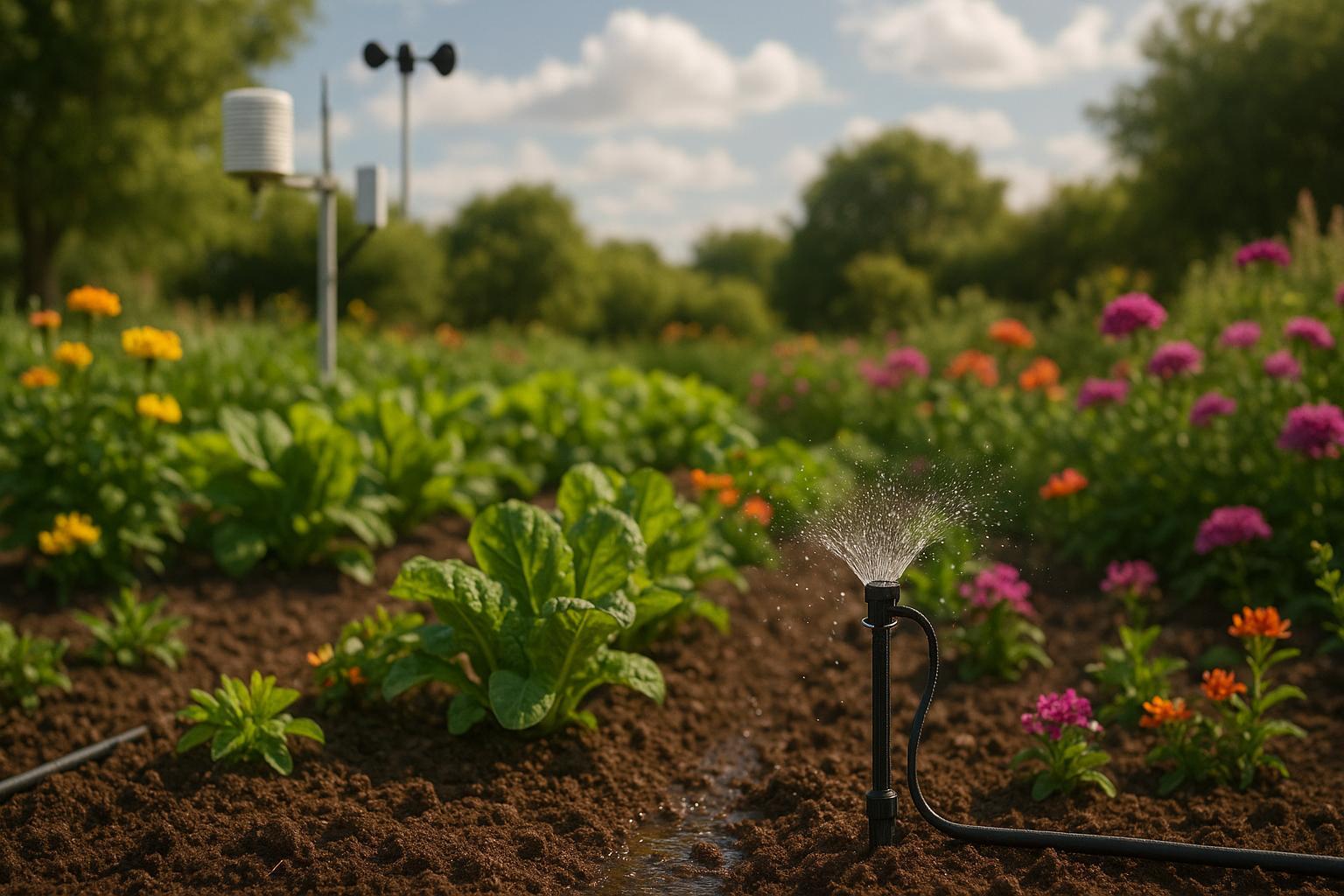
AI Tools for Seasonal Irrigation Forecasting
AI irrigation systems optimize water use and plant care by analyzing weather and soil conditions, ensuring healthier gardens and cost savings.
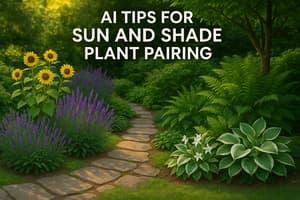
AI Tips for Sun and Shade Plant Pairing
Transform your garden with AI tools that simplify sun and shade plant pairing for a thriving mixed-light garden.